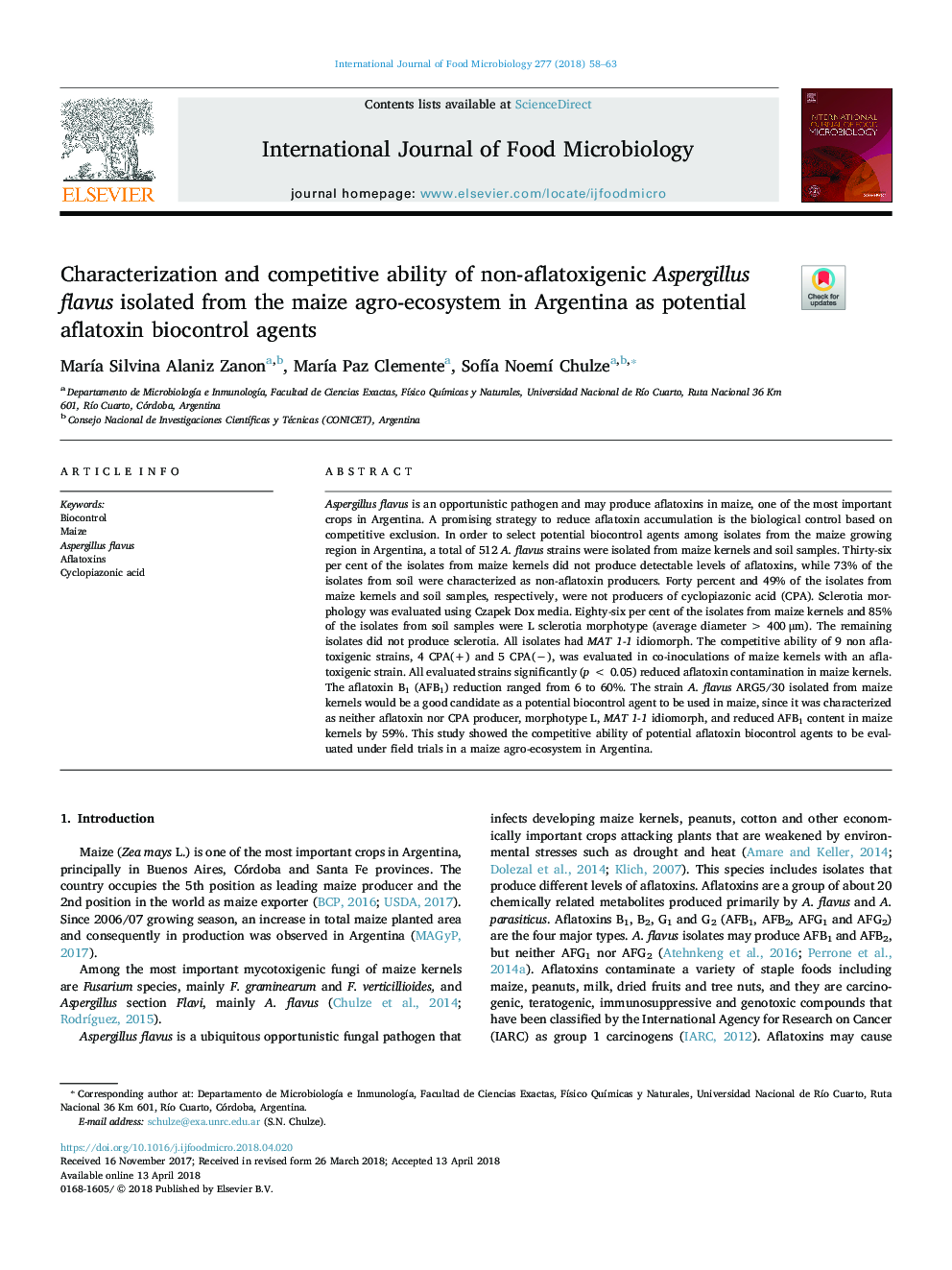| Article ID | Journal | Published Year | Pages | File Type |
|---|---|---|---|---|
| 8844179 | International Journal of Food Microbiology | 2018 | 6 Pages |
Abstract
Aspergillus flavus is an opportunistic pathogen and may produce aflatoxins in maize, one of the most important crops in Argentina. A promising strategy to reduce aflatoxin accumulation is the biological control based on competitive exclusion. In order to select potential biocontrol agents among isolates from the maize growing region in Argentina, a total of 512 A. flavus strains were isolated from maize kernels and soil samples. Thirty-six per cent of the isolates from maize kernels did not produce detectable levels of aflatoxins, while 73% of the isolates from soil were characterized as non-aflatoxin producers. Forty percent and 49% of the isolates from maize kernels and soil samples, respectively, were not producers of cyclopiazonic acid (CPA). Sclerotia morphology was evaluated using Czapek Dox media. Eighty-six per cent of the isolates from maize kernels and 85% of the isolates from soil samples were L sclerotia morphotype (average diameterâ¯>â¯400â¯Î¼m). The remaining isolates did not produce sclerotia. All isolates had MAT 1-1 idiomorph. The competitive ability of 9 non aflatoxigenic strains, 4 CPA(+) and 5 CPA(â), was evaluated in co-inoculations of maize kernels with an aflatoxigenic strain. All evaluated strains significantly (pâ¯<â¯0.05) reduced aflatoxin contamination in maize kernels. The aflatoxin B1 (AFB1) reduction ranged from 6 to 60%. The strain A. flavus ARG5/30 isolated from maize kernels would be a good candidate as a potential biocontrol agent to be used in maize, since it was characterized as neither aflatoxin nor CPA producer, morphotype L, MAT 1-1 idiomorph, and reduced AFB1 content in maize kernels by 59%. This study showed the competitive ability of potential aflatoxin biocontrol agents to be evaluated under field trials in a maize agro-ecosystem in Argentina.
Related Topics
Life Sciences
Agricultural and Biological Sciences
Food Science
Authors
MarÃa Silvina Alaniz Zanon, MarÃa Paz Clemente, SofÃa Noemà Chulze,
